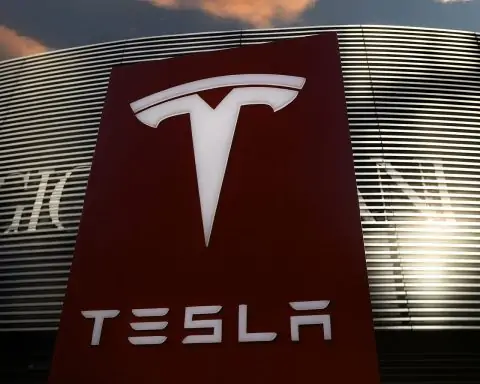Key Facts at a Glance: – ESS Tech, Inc. (NYSE: GWH) is a long-duration energy storage company focused on iron-based flow batteries [1]. The firm (founded 2011, ~240 employees) designs, builds and deploys large-scale “iron flow” battery systems for utilities and commercial customers [2] [3]. Its products (Energy Warehouse, Energy Center, and the new Energy Base platform) use cheap, earth-abundant iron, salt and water in the electrolyte [4] [5]. ESS touts that its batteries are “safe and sustainable with no risk of thermal runaway” and have a 25+ year lifespan [6]. As of Oct 9, 2025 close, GWH traded around $1.72/share (market cap ~$26M) [7] [8]. Wall Street consensus is a Hold rating (average 12‑month target ~$2.67) [9], though Roth Capital recently raised its target to $3.50 [10]. In recent days ESS announced a 5 MW/50 MWh pilot with Arizona’s Salt River Project under a 10-year contract [11], news that sent GWH shares surging ~175% in pre-market trading on Oct 10 [12].
Company Overview
ESS Tech’s mission is to “accelerate decarbonization safely and sustainably” by delivering longer-duration storage [13]. The company’s core innovation is an iron-based flow battery. Unlike lithium-ion, iron flow batteries store energy in a liquid electrolyte: iron metal is oxidized/reduced in a water-salt solution during charge/discharge. ESS’s systems (e.g. Energy Warehouse for 6–12 hour behind-the-meter storage, and larger Energy Center and Energy Base for multi-hour utility use) are built from modular containers of iron electrolyte [14]. Because the electrolyte is non-flammable and uses plentiful materials, ESS emphasizes that its batteries are “environmentally sustainable” and “non-flammable and non-toxic” [15] [16]. The company notes that its iron-flow chemistry “addresses energy delivery, duration, and cycle-life in a single battery platform that compares favorably to lithium-ion batteries” [17]. In practice, ESS’s flow batteries can safely provide 10+ hour dispatch for grid or commercial use, with a 25+ year calendar life [18] [19].
ESS’s business model is to sell or lease these containerized systems to utilities, project developers and large industrial customers. It has deployed projects in California (e.g. a 2 MW system for Sacramento municipal utility) and is now moving into new markets [20]. Revenue is still small (2024 sales ~$6.3M [21]) and the company is unprofitable, but ESS is betting that future sales of its novel long-duration batteries will scale as utilities seek more grid flexibility. Federal incentives bolster its model: ESS’s fully domestic supply chain makes it eligible for U.S. tax credits (Section 45X) and other Inflation Reduction Act benefits [22].
Latest News and Developments (Oct 2025)
SRP 50 MWh Pilot (Oct 9, 2025): ESS made headlines with a deal to install a 5 MW/50 MWh system (“Project New Horizon”) for Salt River Project (SRP) in Arizona [23]. Under a ten-year energy storage agreement, ESS will deploy its new Energy Base iron-flow batteries at SRP’s Copper Crossing Energy and Research Center. The system will deliver 10 hours of storage (enough for ~1,125 homes) [24]. ESS emphasizes that the iron-flow system is “safe and sustainable with no risk of thermal runaway” and built with over 90% U.S. content [25]. Design work is already underway, with manufacturing slated to begin in 2026 and project completion by Dec 2027 [26]. In parallel, Google announced in September 2025 that it will fund portions of SRP’s long-duration storage pilots [27] – a program under which ESS’s project is included. This Google-SRP partnership underscores strong industry support for ESS’s technology.
Investor Reaction: The SRP announcement sent ESS’s stock skyrocketing. On Oct 9 the shares popped ~13–17% in reaction to the deal [28] [29]. In pre-market trading on Oct 10 the stock jumped ~176% (to about $4.27) [30] [31]. TipRanks noted that 78 million shares changed hands that morning (vs ~0.3M average) [32]. By midday Oct 10, GWH was well above its recent trading range ($0.76–$10.12 over the past year [33]). This volatility reflects the market’s excitement (and uncertainty) about ESS’s prospects.
Financial Results & Funding: In August 2025 (Q2 results), ESS reported GAAP revenue of $2.4M (up 294% from Q1) [34], reflecting early Energy Warehouse and Energy Center deliveries. It also secured a substantial funding package: up to $31M of new equity capital [35]. After that July financing, cash on hand rose to ~$7.2M (from just $0.8M at Q2-end) [36]. The company also launched its new Energy Base long-duration platform, closing its first sale and submitting bids for over 1.1 GWh of projects [37]. ESS noted that federal policies (IRA tax credits) were aligning with its domestically-made product [38], potentially improving its cost competitiveness.
Leadership Moves: ESS has been shoring up its management. In mid-2025 it appointed industry veteran Jigish Trivedi as Chief Operating Officer and promoted Kate Suhadolnik to Interim Chief Financial Officer [39]. These additions (along with founder/Interim CEO Kelly Goodman) aim to guide the company through product ramp-up and commercialization. (A permanent CEO search is ongoing; Goodman remains interim CEO.)
Expert Commentary and Forecasts
Industry experts have highlighted the significance of the SRP pilot. ESS’s interim CEO Kelly Goodman called it “a significant validation in both the LDES industry and ESS as a technology provider” [40], noting SRP’s commitment to non-lithium storage. SRP’s innovation chief Chico Hunter similarly praised the project, saying it provides an opportunity “to better understand the efficacy and impact of different kinds of LDES technologies” in Arizona’s climate [41]. Analysts have taken note too. A Roth Capital research note (cited by TipRanks) labeled the 5 MW/50 MWh contract a “key validation milestone” for ESS’s new Energy Base platform and even highlighted that Google is co-funding the project [42].
Despite the buzz, Wall Street remains cautiously neutral. According to StockAnalysis and TipRanks data, the average analyst rating is “Hold” (based on 4 analysts) with a 12‑month price target around $2.67 [43]. This implies about 55% upside to recent prices. TipRanks shows GWH’s consensus target around $1.83 (after only 2 analysts) [44], reflecting a split in opinion. The most bullish call (Roth) suggests ~$3.50 [45]. For context, ESS’s stock had fallen roughly 70–78% year-to-date prior to the SRP news [46], so analysts remain wary until more deals and revenue materialize.
Stock Price & Technical/Fundamental Analysis
As of Oct 9, 2025 the stock closed at $1.72 [47]. On Oct 10 pre-market it reached about $4.27 [48] (up ~148%). Trading volume exploded on Oct 10 to ~78M shares [49] versus a prior daily avg of ~0.3M. Technically, the recent rally lifted GWH far above moving averages. Before the jump, TipRanks noted GWH’s price ($1.79 at Oct 9) was above its 50-day SMA (~$1.62) but well below the 200-day (~$2.73) [50], giving mixed buy/sell signals. Its RSI was about 56 (neutral) and MACD flat [51] [52]. In short, the chart was oversold and has now snapped sharply higher on this catalyst.
Fundamentally, ESS is still very small. It has only ~15.1 million shares outstanding [53] and a market cap of ~$26M [54]. Trailing-12-month revenue is roughly $6.2M [55], with net losses far exceeding sales (2024 net loss ~$86M) [56]. The Q2 2025 operating results (announced Aug) showed modest GAAP revenue ($2.4M) with large costs. Cash reserves of ~$7.2M (mid-2025) give a short runway, though the $31M funding should extend it into 2026 [57]. Key valuation metrics (P/E, EV/revenue) are not meaningful given the losses; the stock trades on future expectations. For reference, prior to the rally GWH’s 52-week range was $0.76–$10.12 [58]. The recent pop has us near the top of that range, but still below its 2021 IPO highs.
Market Context: Long-Duration Storage & Clean Energy
ESS operates in the rapidly growing clean energy storage market. The move toward decarbonization and renewables is creating demand for “long-duration” storage (systems capable of 6–12+ hour discharge). A 2021 industry analysis estimated the U.S. may need on the order of 140 TWh of LDES by 2040 to reach net-zero power [59]; Europe’s need could be ~20 TWh by 2040 [60]. These are vast sums – to put it in perspective, one recent report noted LDES deployment could require ~$330 billion in new investment by 2030 [61]. Governments and utilities are taking notice: the DOE has set aggressive R&D targets, and even large corporates (Google, Microsoft) are funding pilot programs [62].
Within this context, ESS’s iron-flow approach is one of several contenders. Competitors include Form Energy (iron–air batteries promising ~100-hour duration [63]), zinc-based flow batteries (e.g. Eos Energy, Primus) and vanadium redox flow cells. Lithium-ion can handle shorter durations (4–6 hours) but becomes expensive and less reliable for multi-hour storage. Industry analysts note that once you need 6–12+ hour discharge, flow and metal-air technologies start to out-compete lithium-ion on cost [64]. ESS argues its system has the virtue of simplicity and safety: unlike vanadium batteries (which use toxic, scarce vanadium) or metal-air cells (which can have efficiency/hydrogen issues), iron flow is non-toxic and uses cheap domestic iron [65] [66]. ESS’s deployments (e.g. Sacramento microgrid) and DOE/state grants support its credibility [67] [68].
Despite the excitement, adoption is still nascent. As one analysis noted, utilities have added many short-duration lithium projects, but “the market for long-duration energy storage is only just starting to materialize” [69]. ESS’s management echoes urgency: company executive Hugh McDermott recently said “now is not the time for utilities to hesitate” on LDES pilots [70]. Indeed, a trade newsletter recently cited ESS (alongside Eos and Invinity) as a “leader in long-duration storage” [71], reflecting growing visibility. Federal policy is a strong tailwind: the U.S. IRA provides production tax credits (45X) for domestically-made storage cells, estimated to be worth ~$90M per 2 GWh production line [72]. This “clean energy” legislative support (extended by the 2024 budget act) makes ESS’s U.S.-built batteries more competitive [73] [74]. In sum, ESS Tech sits at the intersection of booming demand for grid storage, favorable policy, and competition from other LDES innovators. Its success will hinge on demonstrating its iron-flow batteries at scale and securing a steady stream of contracts.
Sources: Company filings and press releases [75] [76] [77]; financial press (Investing.com, MarketScreener) [78] [79] [80]; stock data (Yahoo/StockAnalysis) [81] [82] [83]; industry analysis (Canary Media, C&EN, etc.) [84] [85] [86]; utility and analyst reports [87] [88] [89]. Each source is cited above in context.
References
1. investors.essinc.com, 2. essinc.com, 3. www.marketscreener.com, 4. investors.essinc.com, 5. www.marketscreener.com, 6. essinc.com, 7. stockanalysis.com, 8. stockanalysis.com, 9. stockanalysis.com, 10. www.tipranks.com, 11. essinc.com, 12. www.tipranks.com, 13. essinc.com, 14. www.marketscreener.com, 15. investors.essinc.com, 16. www.marketscreener.com, 17. www.marketscreener.com, 18. essinc.com, 19. investors.essinc.com, 20. cen.acs.org, 21. stockanalysis.com, 22. www.businesswire.com, 23. essinc.com, 24. essinc.com, 25. essinc.com, 26. www.investing.com, 27. www.utilitydive.com, 28. www.investing.com, 29. www.investing.com, 30. www.tipranks.com, 31. stockanalysis.com, 32. www.tipranks.com, 33. stockanalysis.com, 34. www.businesswire.com, 35. www.businesswire.com, 36. www.businesswire.com, 37. www.businesswire.com, 38. www.businesswire.com, 39. www.businesswire.com, 40. essinc.com, 41. essinc.com, 42. www.tipranks.com, 43. stockanalysis.com, 44. www.tipranks.com, 45. www.tipranks.com, 46. www.tipranks.com, 47. stockanalysis.com, 48. stockanalysis.com, 49. www.tipranks.com, 50. www.tipranks.com, 51. www.tipranks.com, 52. www.tipranks.com, 53. stockanalysis.com, 54. stockanalysis.com, 55. stockanalysis.com, 56. stockanalysis.com, 57. www.businesswire.com, 58. stockanalysis.com, 59. essinc.com, 60. essinc.com, 61. cen.acs.org, 62. www.utilitydive.com, 63. cen.acs.org, 64. www.canarymedia.com, 65. essinc.com, 66. investors.essinc.com, 67. cen.acs.org, 68. cen.acs.org, 69. cen.acs.org, 70. cen.acs.org, 71. ts2.tech, 72. ts2.tech, 73. www.businesswire.com, 74. ts2.tech, 75. essinc.com, 76. essinc.com, 77. www.businesswire.com, 78. www.investing.com, 79. www.investing.com, 80. www.tipranks.com, 81. stockanalysis.com, 82. stockanalysis.com, 83. www.tipranks.com, 84. www.canarymedia.com, 85. cen.acs.org, 86. cen.acs.org, 87. www.utilitydive.com, 88. www.tipranks.com, 89. ts2.tech







